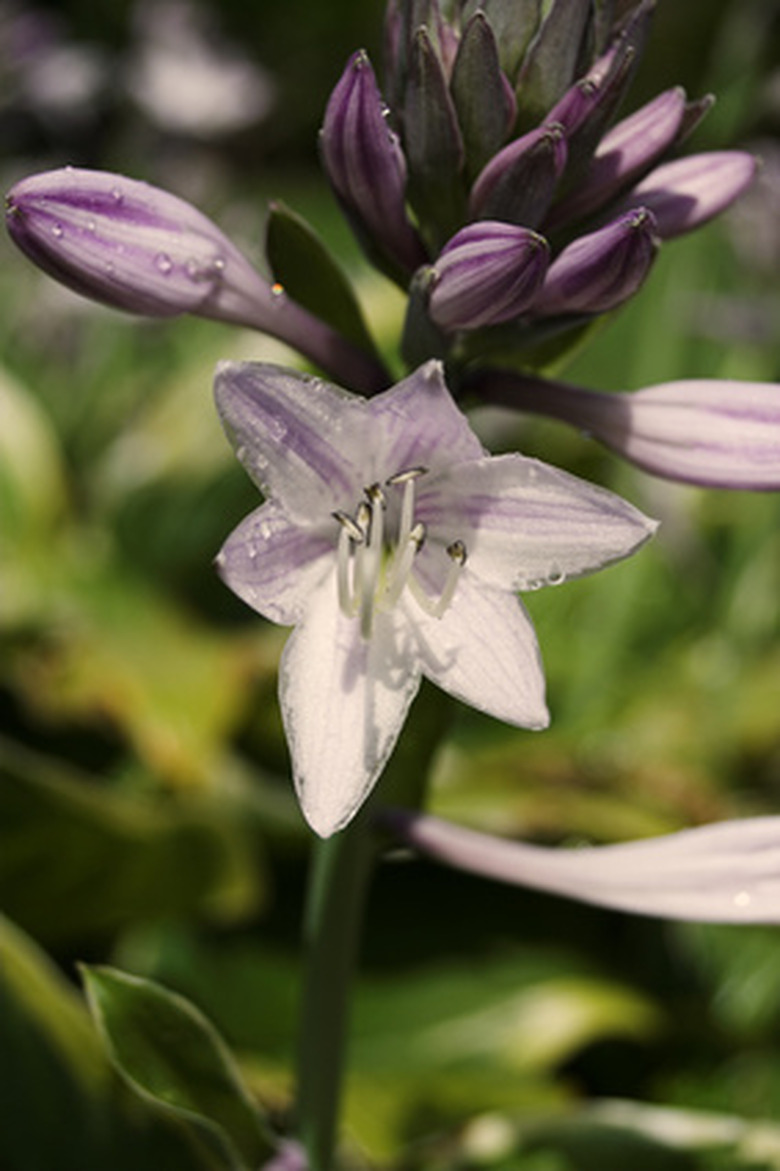How To Winterize Hostas
Things Needed
- Garden hose and water
- Mulch
- Pruning shears
The winter months of the year bring extreme conditions to landscape plants. The constant care of summer gives way to intermittent care during the fall. Hostas need protection from freezing conditions that penetrate deeply into the soil. Frost heaving, lack of water, and little sunlight affect the growing environment of the home landscape. Learning how to winterize hostas begins with proper care throughout the growing season. Planning ahead to protect these beautiful foliage landscape plants increases the chance of survival during the winter.
Step 1
Allow the hosta foliage to die off naturally as winter approaches. The leaves nourish the rhizomes (roots) beneath the soil.
- The winter months of the year bring extreme conditions to landscape plants.
- The constant care of summer gives way to intermittent care during the fall.
Step 2
Apply a 2- to 3-inch layer of mulch over the crown of the plant before the first hard freeze occurs in the fall. Extend the layer outward to the dripline (edges of leaves) of the plant. Hosta generally doesn't require this mulch layer except during severe winters. This mulch layer retains moisture in the soil to benefit the hosta roots.
Step 3
Water the hosta once a month during the winter months. Pay particular attention to the plant during long periods of little rain or snow. Apply water to the plant below the leaves directly into the soil bed in a light trickle for 10 minutes. Hosta cannot tolerate soggy or overly wet soil conditions in either summer or winter.
- Apply a 2- to 3-inch layer of mulch over the crown of the plant before the first hard freeze occurs in the fall.
- Extend the layer outward to the dripline (edges of leaves) of the plant.
Step 4
Pull the mulch layer back in the early spring to allow the new growth to have access to light. Failure to remove mulch from the immediate growing area may cause the plant center to rot. Clip away any remaining dead foliage using pruning shears.
Tip
Hosta tolerates a slow-release, granulated fertilizer applied in the late spring. This method reduces the care required during the summer months and provides the light fertilization at the soil level. Avoid placing fertilizer on hosta leaves to limit burning. Hostas typically require division every 4 to 5 years. Divide plants in the spring to allow time for the hosta to become established in a new location. If later summer or early fall division is necessary, always place a protective layer of mulch over the plant for the winter. This mulch layer also regulates soil temperature throughout the year.
